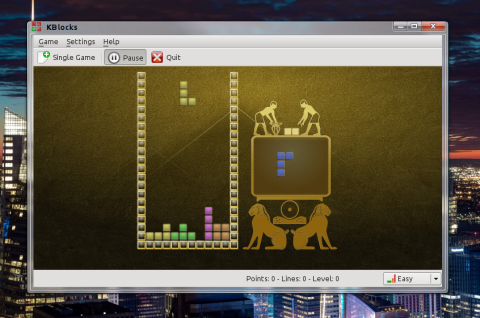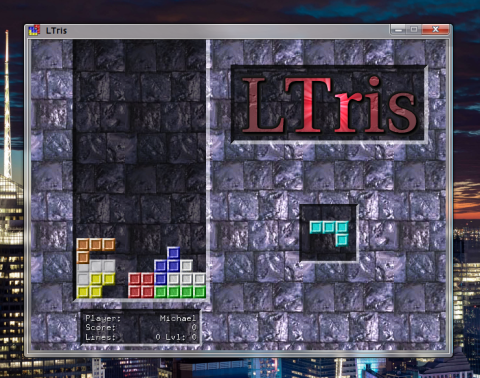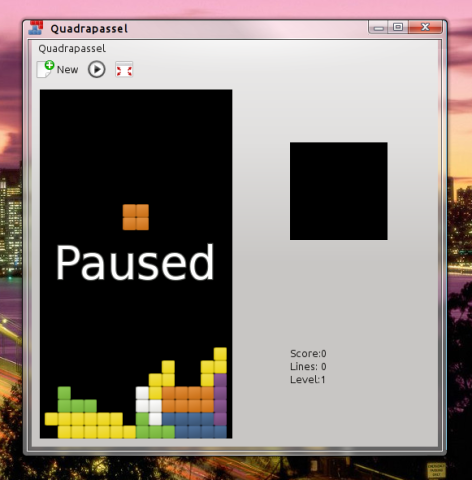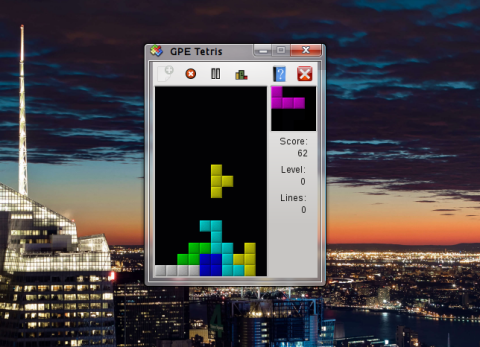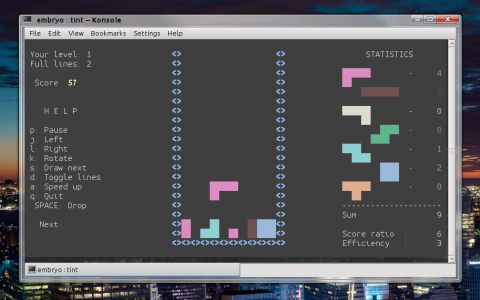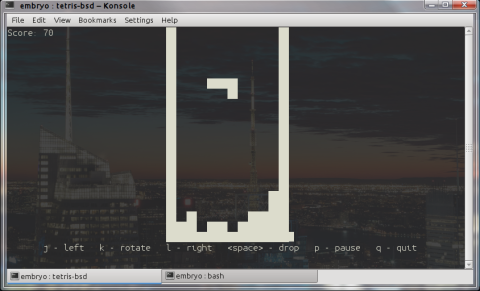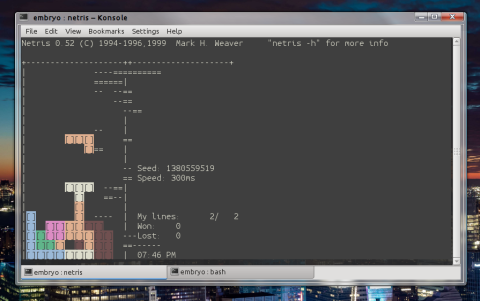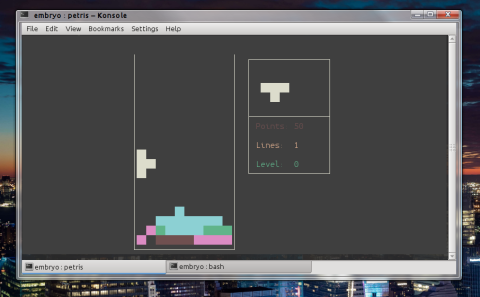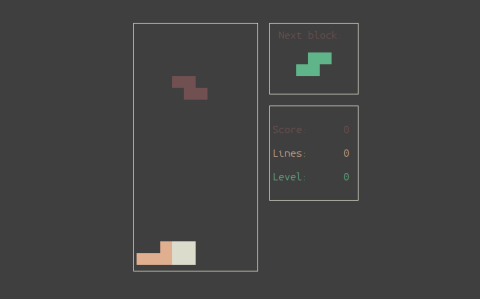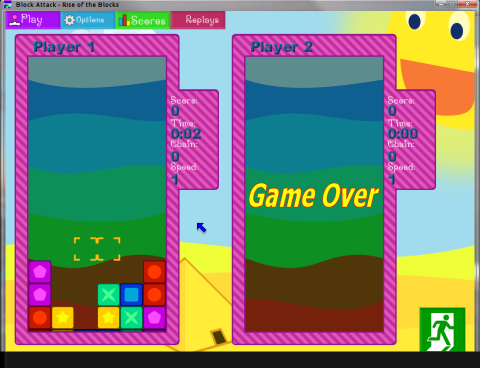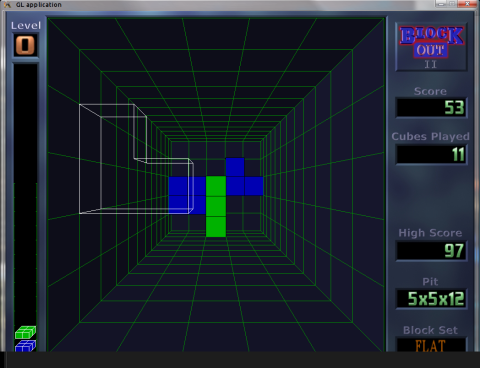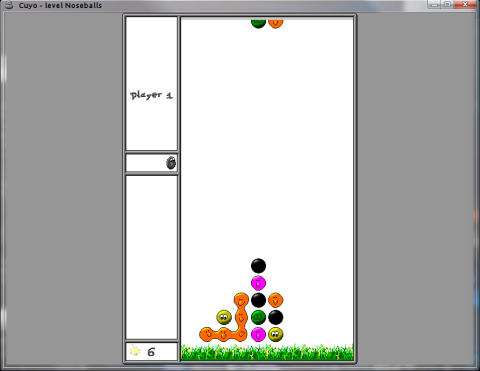Here is an overview of 10 clones of the game after which a syndrome was named, some graphical and some running in a console. Hopefully you will find these enjoyable (maybe while still trying to avoid the Tetris effect).
Atris
Alizarin Tetris, or Atris, is a 2D graphical Tetris clone with some very neat features. I find it easier to handle since moving the pieces to left or right is done instantly, faster, without the short delay typical Tetris games have. It is also possible to use accelerated speed (default key Down Arrow) and then, when the piece is near the bottom, quickly move it left or right. It provides fullscreen or windowed mode, has graphical configuration options (except for the resolution), keyboard shortcuts, color schemes and pieces schemes. It seems that it doesn’t save the toggle fullscreen option between sessions, but this can be fixed by manually editing the ~/.atrisrc file and setting full_screen to 0 or 1. Press Q to quit a running game.
Alizarin Tetris
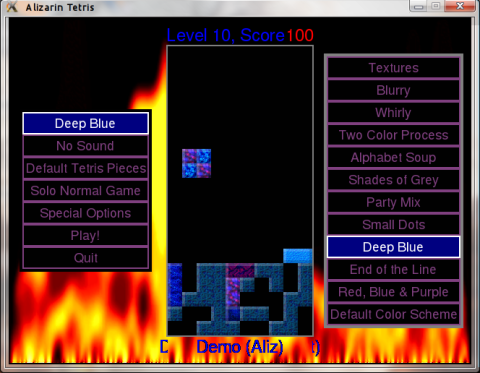
KBlocks
This is the KDE Tetris clone, and it provides a typical implementation, with decent options and a windowed interface. It provides table themes and a human vs AI mode.
LTris
This is a graphical clone which can be ran fullscreen or in windowed mode, and features single player, human vs computer and human vs human. Provides several configuration options. One of the nice features it has is that it shows where the current block would fall once it reaches the bottom side of the table. It runs in 640×480 resolution.
Quadrapassel
Another graphical Tetris clone, Quadrapassel has a simple interface written in GTK and provides themes, sounds and keyboard configuration.
GPE Tetris
And finally, GPE-Tetris, a clone of Tetris with a very minimalist interface, including high scores and 19 difficulty levels.
Tint
Among the Tetris games for the terminal, Tint is my favorite. Standing for Tint Is Not Tetris (which actually is), Tint is a very nice clone of Tetris with 9 levels, high scores, Vi-style keyboard shortcuts (J – left, L – right, K – rotate, SPACE – drop, P – pause) and the original Tetris score algorithm. If you get the error message when trying to save high scores “Error creating /var/games/tint.scores”, just create this file as root and change its permissions (e.g. sudo touch /var/games/tint.scores && sudo chown $USER /var/games/tint.scores).
Tetris-bsd
This is a Tetris for the console and comes in the bsdgames package. Same as Tint, but monochrome, Tetris-bsd uses the J, K, L and Space keys for moving and manipulating pieces. After a drop, you can also move the piece quickly left or right. In Ubuntu, install the package bsdgames and run the game by typing tetris-bsd.
Netris
Yet another console-based Tetris clone, Netris uses the Vi-style keyboard shortcuts (H, J, K, L) and can be started with different parameters in the command-line. Use Ctrl+C to quit.
Petris
Another basic Tetris game for the terminal. Use Ctrl+C to quit it.
Bastet
Includes two levels of difficulty, keys customization and high scores. Bastet also uses an algorithm to choose the worst brick possible for the next brick.
In addition to these, several variations of Tetris (not pure, classic Tetris) like 3D Tetris exist: BlockOut II, Block Attack (a Tetris Attack clone), Crack Attack!, cuyo, Ghextris, Gtkboard (which includes 31 games, among which a Tetris clone), Xwelltris.
Resources
Thanks, great writeup. I have Quadrapassel, I shall now try Tint!
Quadrapassel blocks are not random–a known bug at present. The feature in Ltris you like, flashing ghost block in destination, is for me an annoying distraction which I see no way to inactivate via options. Thanks for summarizing alternatives to test (athough it is not the kind of unwinnable game I enjoy much).




